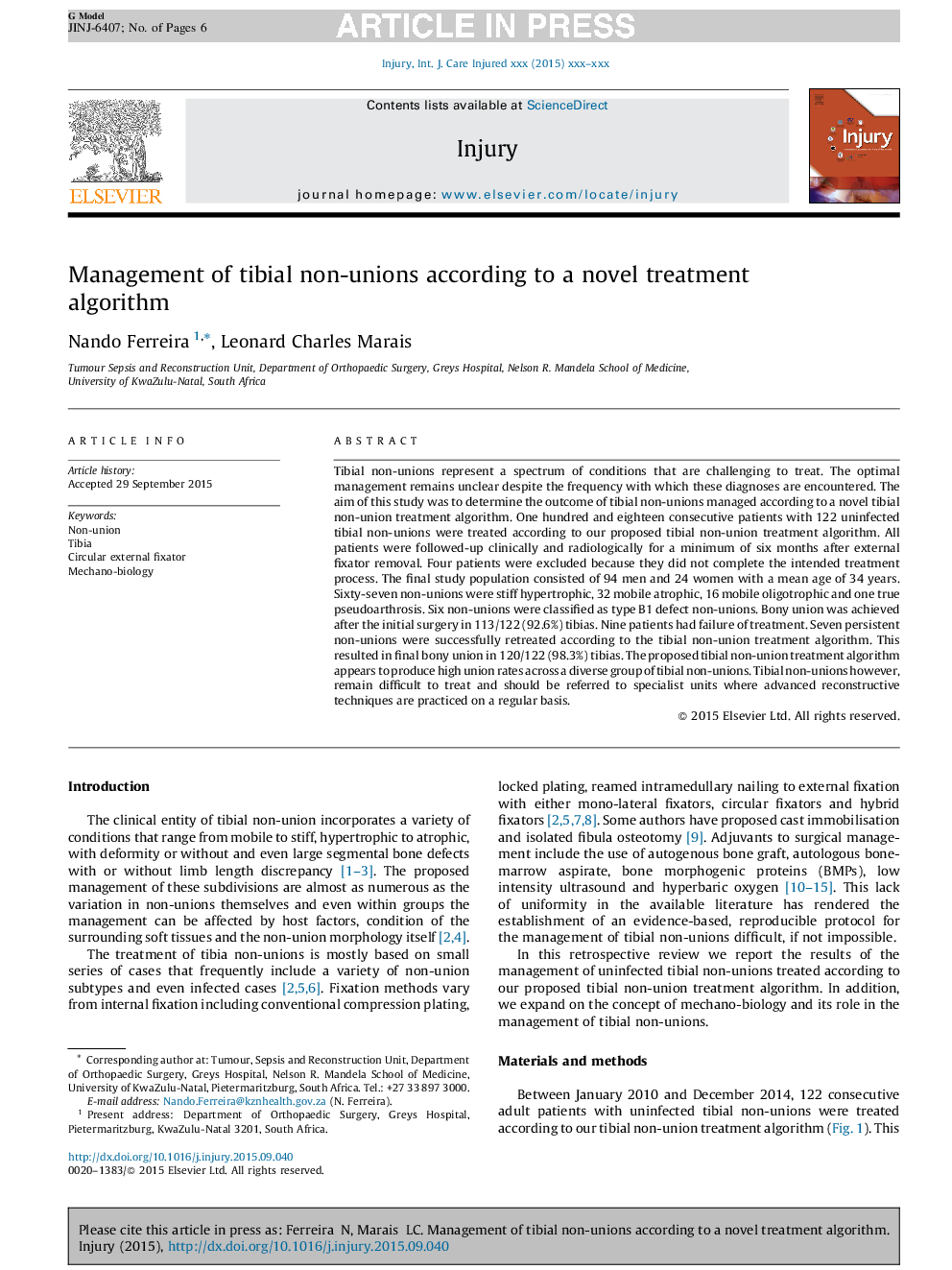| Article ID | Journal | Published Year | Pages | File Type |
|---|---|---|---|---|
| 6083011 | Injury | 2015 | 6 Pages |
Abstract
Tibial non-unions represent a spectrum of conditions that are challenging to treat. The optimal management remains unclear despite the frequency with which these diagnoses are encountered. The aim of this study was to determine the outcome of tibial non-unions managed according to a novel tibial non-union treatment algorithm. One hundred and eighteen consecutive patients with 122 uninfected tibial non-unions were treated according to our proposed tibial non-union treatment algorithm. All patients were followed-up clinically and radiologically for a minimum of six months after external fixator removal. Four patients were excluded because they did not complete the intended treatment process. The final study population consisted of 94 men and 24 women with a mean age of 34 years. Sixty-seven non-unions were stiff hypertrophic, 32 mobile atrophic, 16 mobile oligotrophic and one true pseudoarthrosis. Six non-unions were classified as type B1 defect non-unions. Bony union was achieved after the initial surgery in 113/122 (92.6%) tibias. Nine patients had failure of treatment. Seven persistent non-unions were successfully retreated according to the tibial non-union treatment algorithm. This resulted in final bony union in 120/122 (98.3%) tibias. The proposed tibial non-union treatment algorithm appears to produce high union rates across a diverse group of tibial non-unions. Tibial non-unions however, remain difficult to treat and should be referred to specialist units where advanced reconstructive techniques are practiced on a regular basis.
Keywords
Related Topics
Health Sciences
Medicine and Dentistry
Emergency Medicine
Authors
Nando Ferreira, Leonard Charles Marais,
